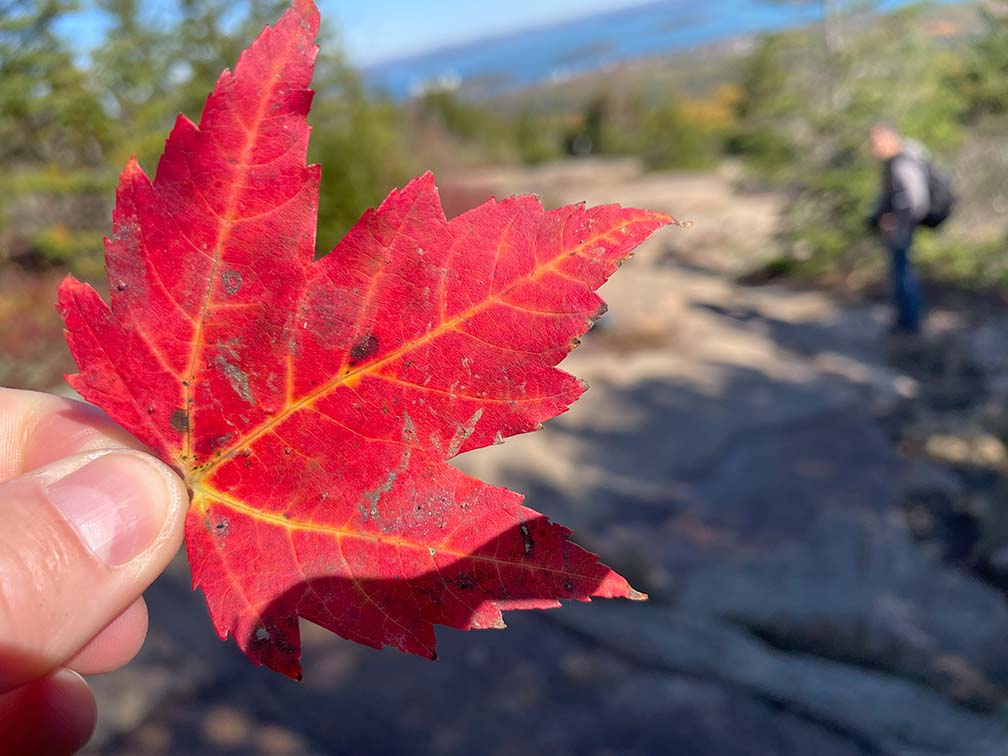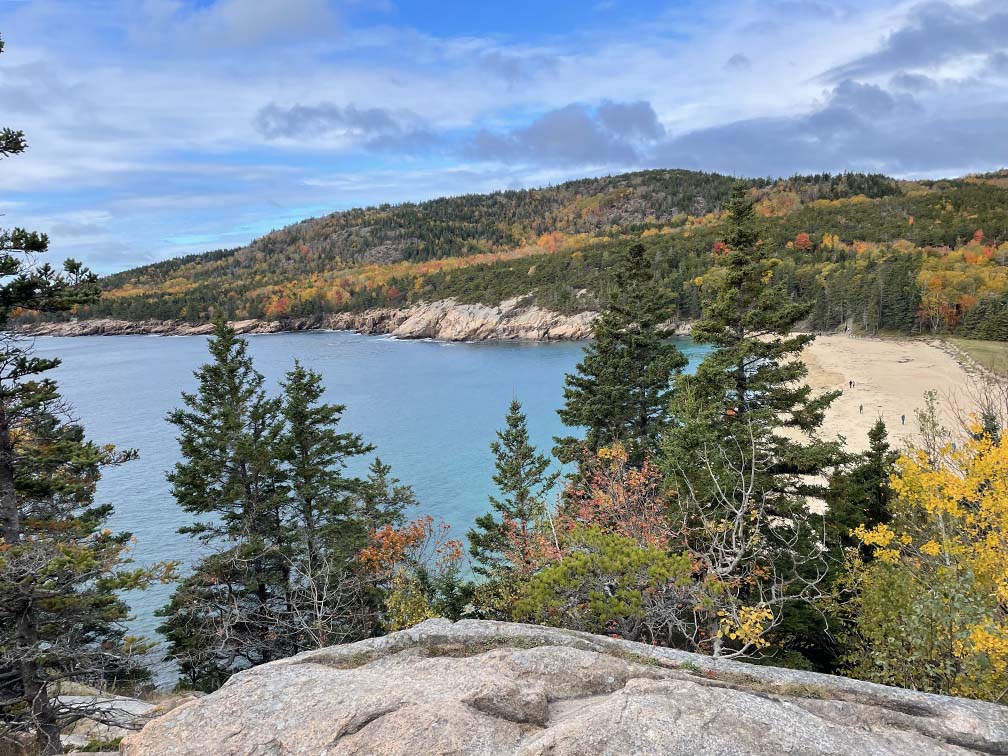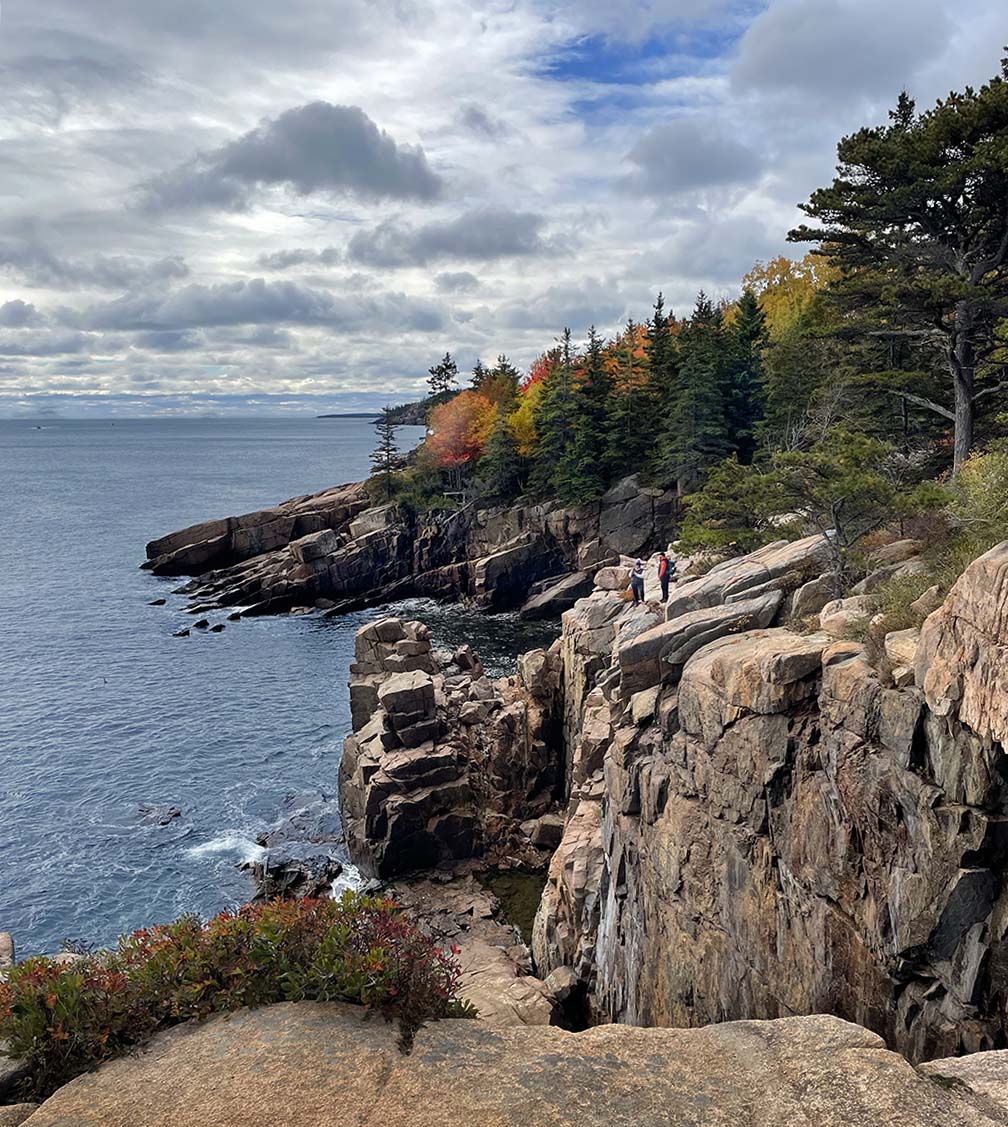Photographing Acadia With A Cell Phone
WRITTEN BY: BRUCE LOVELACE
PHOTOGRAPHY BY: SANDRA LOVELACE
PUBLISHED ON: October 30 , 2024
Can you get great photos of Acadia National Park when using a cell phone? Definitely! The photos in this post were all taken with my wife's smartphone and she's just a beginning photographer! Although not so sophisticated as a dedicated digital camera, mobile phone cameras can be used to get stunning photos of one of America's unique treasures.
You don't need to lug around a large camera in order to capture the beauty of Acadia. My wife proved it without having to try very hard. This post is a gallery of images of Acadia. What's more, it's embedded with tips on how to get the best photos of this magical place in Maine using the tiny camera that's built into your phone.
Also, in addition to looking at these smartphone images, you can compare them with my "professional" photos of Acadia that were taken with high end digital cameras, either a Canon 5D Mark III or a Canon R6 Mark II. Here's the post with my photos of Acadia.
Cell Phone Photos of Acadia
The location photographed below is one of my favorite spots to visit and shoot photos. Little Hunters Beach is a geological marvel. Once you come down the steps from the Park Loop Road, you can walk to the far end of the beach and carefully climb the rocks to get to this vantage point.
I love the various shades of blue emanating from the ocean, the sky, and the small pool in the foreground. You get a good sense of scale if you look closely at the two people climbing the rocks on the far side of the cove.
Little Hunters Beach is not like the typical sand beach you'd see on the coast in New Jersey, Virgina Beach, or the Florida Keys. The mobile phone photo below reveals the most interesting aspect of Little Hunters Beach, the rounded rocks.
My wife took the photo of the beach above in an area of the beach where the rocks are small. Other areas of the beach have larger rocks and some areas even have rounded boulders. It's fascinating to see how the crashing waves and tidal forces have shaped these rocks over the centuries.
Look at the photo of the red maple leaf below. Sandy brough this magnificent leaf in super close to her phone and got a great blurring of me on the trail in the background. Shooting to intentionally blur the background is a great way to visually emphasize your subject and separate it from the background.
Shortcut To Great Photos of Acadia
Smartphone cameras are powerful tools capable of taking great images, but there are some limitations. DSLRs and mirrorless interchangeable zoom lens cameras give you more flexibility on using different focal lengths to compose your shot just right. Smartphone cameras only have digital zooms.
One of the easiest ways to improve your cell phone photos of Acadia is to do some creating cropping. I improved the composition on the following two Acadia National Park photos by cropping them into a square format rather than the original rectangular compositions.
 Cropping eliminated distracting branches
Cropping eliminated distracting branches(The original photo was horizontal)
 Much improved composition as a square
Much improved composition as a square(The original photo was a vertical)
Both of the vertical compositions below are balanced compositions with great visual depth. They include several different "layers,' starting with objects in the foreground, continuing with mid-distance layers, and finishing with far distance.
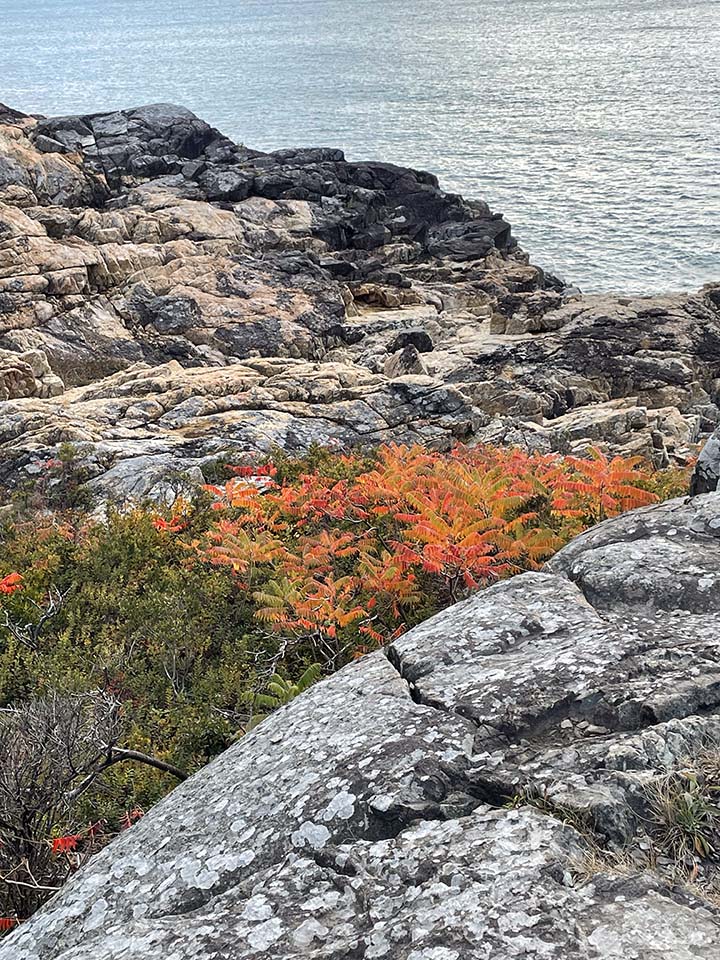 Acadia Splendor
Acadia Splendor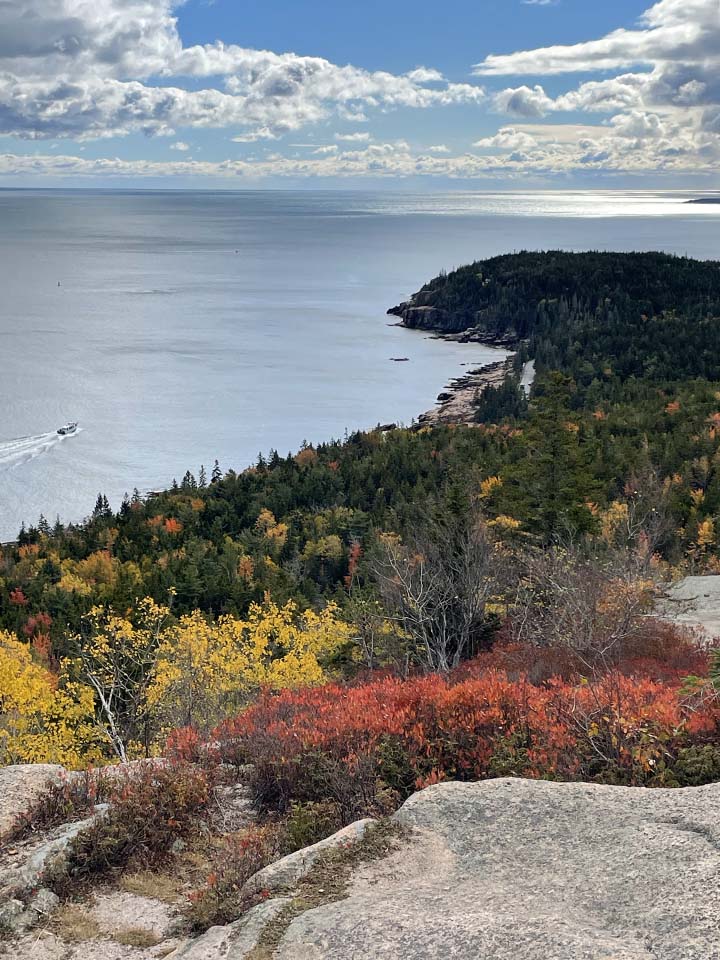 View From Gorham Mountain
View From Gorham MountainWHO SAYS YOU CAN'T TAKE GREAT LANDSCAPE PHOTOS WITH A CELL PHONE:
What I liked about the "Acadia in the Fall" photo below was the balance of the rocks, the ocean, the sky, and the foliage. It has a nice broad range of colors-I adjusted them a little in Photoshop.
For the photo above, my wife held her phone in a vertical "portrait" orientation which was a great way to include the rocks in the foreground and the shoreline in the distance .
Tips On How To Photograph Acadia National Park Using Your Camera Phone
Smartphones are remarkably good at auto-focusing and auto exposure. Visit picturesque destinations and you're guaranteed to get photos that are so beautiful that you could turn them into postcards, right? Well, not exactly. Here are 3 important tips for getting the very best photos of Acadia with your camera phone.
LOCATION
Do a little research on the specific photo hotspots you may want to visit before you travel to Acadia. I recommend you shop around for a good Acadia Photography book. There are plenty of great ones that you'll find very helpful. You can use a very helpful app designed by the National Park Service available on their website that will help you plan: NPS Acadia Photo App.
I enjoy shooting both the well known hotspots as well as photo opportunities that are off the beaten track. If you have the time you should do the same.
LIGHTING
Any kind of photography is all about lighting and Acadia is no different. Carefully observe how the current lighting is affecting how your subject looks. You may have to return to your scene when the lighting is better. Watch for interesting lighting conditions before and after storms, or early and late in the day.
COMPOSITION
When it comes to taking successful photos of Acadia with your cell phone, more than any other skill you need to develop is intentionally pay attention to the overall composition. The biggest mistake is to get so mesmerized by the stunning scene in front of you that you simply center your subject, hold your camera at eye level, and quickly take the snapshot.
Take a minute to observe the scene in front of you BEFORE you shoot your photo.
Shoot for variety is several different ways. Choose different vantage points. Shoot vertically and horizontally, Shoot from different elevations of your camera, low angle, mid, and high. Zoom in for details. Zoom out for wide angles. Shoot an overall wide angle that can be cropped later with software.
Using the map of Acadia below, you can zoom in to various mountains, lakes, coves, hiking paths, roads
No post about photography of Acadia National Park would be complete without at least one photo of Bar Harbor and the iconic Porcupine Islands. This photo was taken somewhere around midway up the North Ridge Trail to Cadillac Mountain and is a good spot to photograph these 4 small Islands.
 Bar Harbor and the Porcupine Islands
Bar Harbor and the Porcupine IslandsView from Cadillac North Ridge Trail.
I hope you enjoyed this sampling of photos from my wife's iPhone from our visit to Acadia and got some helpful tips to help you with your photography. See more travel posts below my signature.
More information on photographing Acadia National Park
TRAVEL PHOTOGRAPHY BOOKS ON ACADIA. The two books I used as guides for my first trip to Acadia
3 DAYS TO PHOTOGRAPH ACADIA. An article written by me for Canadian Nature Photographer Magazine

Bruce Lovelace is the publisher of TravelingPhotographer.com. Bruce shot portraits full time for over 35 years. Now he shoots more travel photography. Read more about him on the About Page. He also publishes how to articles and camera gear reviews at the Photography Tips and Canon Geek websites.
The Traveling Photographer Location on Google My Business



